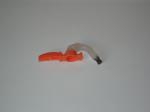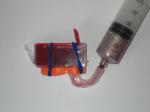barfl2
Print Addict
PeterBJ Could I ask a question about your adaptor. Does the needle cover connect directly with the syringe which I assume is a slip luer type ? or is there a piece of plastic tubing connecting the two. all my covers have 4 external ribs on and would not be suitable. So far I have stuck to luer lock to avoid and inky disasters, and also allows me to draw the required amount of ink from my squeezy bottle and return any surplus the same way. So far not needed any gloves but I am not holding the cartridge.
You were very fortunate to 1. buy a syringe from a Pharmacy and 2. get one with an O ring on. Cannot source syringes from Pharmacies here they only keep the small volume medical ones. I got my non-medical one from E-bay. Most sites sell in multiple quantities and postage can be expensive. They all seem to sell the BD ones and the seals are quite stiff.
Anyway great effort keep up the good work
barfl2
You were very fortunate to 1. buy a syringe from a Pharmacy and 2. get one with an O ring on. Cannot source syringes from Pharmacies here they only keep the small volume medical ones. I got my non-medical one from E-bay. Most sites sell in multiple quantities and postage can be expensive. They all seem to sell the BD ones and the seals are quite stiff.
Anyway great effort keep up the good work
barfl2


